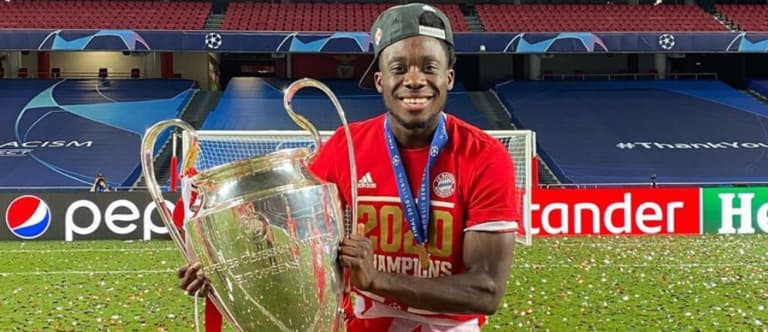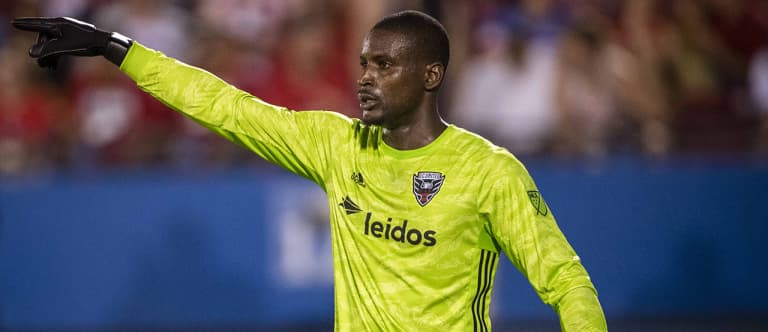Who’s the most valuable MLS Homegrown of all time?
I’m using valuable here to try and take at least a tiny bite out of the subjectivity that comes with assessing players in the world’s most statistics-averse sport. It’s going to be a little easier than trying to declare the “best” Homegrown. The issue using “valuable” instead is that it’s still honestly pretty subjective.
But I think taking a look at the most successful Homegrowns since the Homegrown Rule began in 2008 can help us understand just how important Jordan Morris is (was?) to the Seattle Sounders. Homegrowns have a couple of clear benefits. The first being that a fanbase loves to gravitate towards players that represent the same city or region. That feeling can be as lofty as “wow, if he can succeed from here, maybe I can too” or as basic as “wow, I know a guy that knows a guy who went to his rival high school.”
The second benefit is based entirely on MLS economics which I’m not really going to take a ton of time to explain because my brain already hurts. Essentially, Homegrown Players don’t hurt teams financially until they sign a larger contract a few years into their career, which helps teams strengthen their rosters in other ways. So in the spirit of benefits both spiritual and economic, I’m assessing value based solely on the player’s time with the team that signed them as a Homegrown. Unfortunately, that leaves players who initially signed Homegrown contracts and went on to success with other MLS teams out of this equation, with apologies to Marky Delgado and his Chivas USA Homegrown deal in particular.
After looking through a lot of Homegrowns, I think you can assess the most valuable ones by placing them in three tiers. The first being...
Tier One: That’s a lot of minutes

Wil Trapp had much to celebrate during his time with Columbus Crew. | USA Today Sports Images
There are plenty of Homegrowns who never see the field for the first team. There are plenty of Homegrowns that only see the field for a minimal amount of time. To have one pan out and provide a consistent presence is an objective win.
Honorable mentions: Kellyn Acosta clocked over 8,000 minutes for FC Dallas. Ashtone Morgan had over 8,500 minutes for Toronto FC and Connor Lade has the same for the New York Red Bulls. Scott Caldwell has put over 15,000 (!) minutes in for the New England Revolution. If I didn’t mess up my math, that’s the fourth-most ever by a Homegrown. However, they didn’t make it into the top three for this tier because ... well ... minutes are great, but it’s always good to use those minutes well. Using American Soccer Analysis’ imperfect but still valuable metric “goals added” or g+, this group provided a steady presence but rarely if ever contributed positively to their team.
3. Tommy Thompson - San Jose Earthquakes
Thompson has been in San Jose since 2014. He’s made over 143 appearances and 84 starts for the Quakes while adding four goals and nine assists as a full back and midfielder. He’s still only 25 and has plenty of time to build on all this but up until now, his 7,500 minutes for San Jose have largely been decent to pretty ok actually. Remember, we’re just in tier one here.
2. Sean Davis - New York Red Bulls
Davis has somehow been in New York for six years now, and he’s amassed 107 starts and 9,500 minutes along with four goals and 19 assists. He’s been a consistent presence in the Red Bulls’ XI since 2017 and made 30 starts for the 2018 team that broke the points record. Davis feels like the player from that group who might be the most underrated but maybe I’m tricking myself.
1. Wil Trapp - Columbus Crew
I really struggled whether or not to put Davis over Trapp but then I remember I’m on tier one of an article about Homegrowns and well ... life is only so long. Trapp gets the nod value-wise for the sheer volume of work for the Crew. Before leaving Columbus for Inter Miami ahead of the 2020 season, Trapp put in nearly 16,000 minutes while putting up very similar numbers to Davis in goals, assists and g+.
Tier Two: That’s a lot of money

Alphonso Davies has already had huge success since his move to Bayern Munich, including winning the Champions League in 2020. | Courtesy of Bayern Munich
Homegrown value can be difficult to assess because we rarely get to see the “best” Homegrowns stay in MLS for long. But producing value through a transfer fee still counts as value. And we can assume that players who go for big money provided legitimate production, even if their time with their Homegrown team didn’t last long.
Honorable mention: Bryan Reynolds hasn’t played much in Dallas but appears to be on his way ... somewhere in Europe. Matt Miazga only made 34 appearances for the Red Bulls but still clocked a $5 million dollar transfer fee. Reggie Cannon put in nearly 6,000 minutes for Dallas and then got swooped up for around $3.5 million, and Andy Najar put in even more minutes for D.C. United before leaving for $3 million in 2013. Mark McKenzie is excellent but, his $6 million transfer fee falls short of pushing him into the top three despite me initially having him in. I understand if you have grievances.
3. DeAndre Yedlin - Seattle Sounders
I wrote an entire thing for McKenzie here and then backtracked once I realized my reasoning for number two. Yedlin’s $4 million transfer to Tottenham Hotspur in 2014 probably is about the same level of value as McKenzie’s fee in 2020. Both helped lead their team to a Supporters’ Shield. Yedlin grabbed a U.S. Open Cup as well though and put in a few more starts and minutes. There’s also the added value to the team of making deals with a big name club like Tottenham over Genk. It was very, very close though.
2. Brenden Aaronson - Philadelphia Union
I’ll be upfront. Remember that whole g+ thing? It doesn’t love Aaronson at all. But that doesn’t take away the four goals and seven assists in a shortened 2020 season where he led Philadelphia to a Supporters’ Shield, or the prominent transfer to RB Salzburg for a reported $6 million to $9 million. It’s that transfer fee that pushes him here. Swap any of Yedlin, McKenzie and Aaronson though and no one would complain.
1. Alphonso Davies - Vancouver Whitecaps
When you go to Bayern Munich for $22 million, nothing else really matters. It’s honestly enough to vault him well beyond tier two. But for the sake of this, let’s just appreciate the anomaly.
Tier Three: That’s a lot of production

Bill Hamid has been a stalwart in goal for D.C. United. | USA Today Sports Images
Better than most for longer than most.
3. Gyasi Zardes - LA Galaxy
It didn’t end gracefully, but Zardes put in over 10,000 minutes, scored 34 goals and assisted 17 in 106 starts in LA. His best season came in 2014 when he found the net 16 times on his way to helping the Galaxy win a third MLS Cup in four seasons.
2. Diego Fagundez - New England Revolution
My goodness did Fagundez spend a lot of time being good in New England. Seems wild that he’s on his way to Austin FC. Especially after clocking nearly 17,000 minutes, scoring 53 times, assisting 45 goals, making one MLS Cup and putting in a 2017 season that registers as one of the best seasons in g+ over the last seven years. He may eventually top this tier because, amazingly, after already spending nine seasons in the league, he’s only 25.
1. Bill Hamid - D.C. United
No one has been better for longer as a Homegrown. Hamid has amassed a Homegrown record 22,119 minutes and spent most of them at a statistically elite level in goal. American Soccer Analysis has him in the top-three goalkeepers by statistical measures I don’t have time to explain since 2013. He won Goalkeeper of the Year in 2014 and gets added Homegrown points for coming back home after a brief stint away at FC Midtjylland in 2018.
Tier Four: Uhh ... Jordan Morris?
The prestige!
When I started researching for this, I began to make a Venn diagram in my head of all three tiers. The only player to fit in the overlap of those circles? Jordan Morris.
Morris lands in both tier one and three by virtue of playing 8,500 minutes for Seattle, and producing 35 goals, 20 assists and an increasingly excellent g+ in his four years on the field. That alone is phenomenal. But now Morris is on his way to Swansea. And if reports are correct, Swansea will have an option to buy Morris at the end of his loan for anywhere from $7 million to an eight-figure transfer fee.
Elite production that led to two MLS Cups and now what will easily be a club-record transfer fee means that Morris has positioned himself as perhaps the ideal Homegrown. Not only have you helped create a top-level player that will lead to an influx of cash, you’ve gotten two championships and an MLS Cup appearance out of him every year he was healthy.
Even if a permanent transfer to Swansea doesn’t come to fruition, the worst-case scenario is that you get to keep a Homegrown producing at an all-time level. Morris is a historically special piece of one of MLS’s most unique functions.













